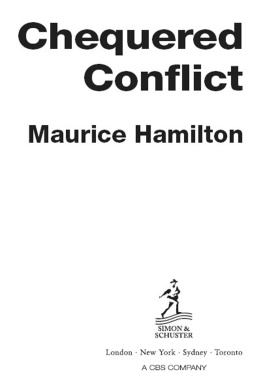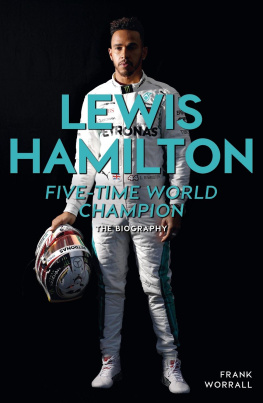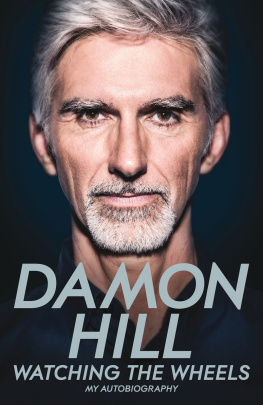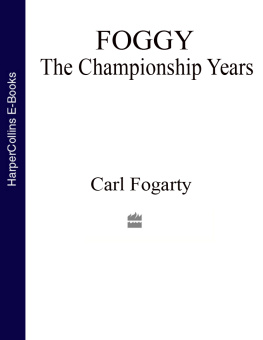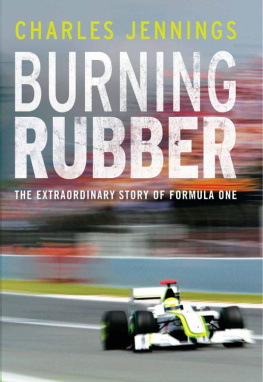This book is copyright under the Berne Convention.
No reproduction without permission.
All rights reserved.
The right of Maurice Hamilton to be identified as the author of this work has been asserted by him in accordance with sections 77 and 78 of the Copyright, Designs and Patents Act, 1988.
A CIP catalogue record for this book is available from the British Library.
INTRODUCTION
Beneficiary to
Benefactor
T he McLaren headquarters has no equal in Formula One. The semicircular building, designed by Sir Norman Foster and built at an over-budget cost of 200 million, is an immaculate monument to Ron Denniss craving for perfection. A desire by the former mechanic to get away from the dirty fingernail impression of his business resulted in this curving creation of glass, steel and chrome; the so-called McLaren Technical Centre is as far removed as it is possible to be from the traditional motor racing image of workbenches and girlie calendars. The shining structure on the outskirts of Woking in Surrey resembles the lobby of a minimalist hotel rather than the home of racing machinery generating noise and lubricated by oil and grease.
The trophy cabinet stretches as far as the eye can see. On Wednesday 6 December 2006, Dennis, in his role of chairman of the McLaren Group, clearly had hopes of increasing the silverware in 2007 when he addressed a lunch for the British media. Dennis was in a relaxed mood, as well he might have been knowing that he had signed the twice-world champion Fernando Alonso. However, the main purpose of the informal gathering around a large oval table in the executive dining room was to allow Dennis to voice his concerns and win the support of journalists when dealing with the arrival of his young protg.
The start of the 2007 season may have been three months away but Dennis and his public relations team were already anxious about the exceptional media interest in Lewis Hamilton, a 21-year-old who had won championships in every junior category and was already showing promise during test sessions with the F1 team. The expectation was that Hamilton would score championship points by being among the first eight finishers in the opening races; perhaps a podium appearance might be possible at a later stage. A win? That could not be ruled out, but it was unlikely.
In any case, Dennis was more concerned about Hamilton being allowed to settle into a job that would involve commitments that went beyond simply driving the car. Each day at the racetrack would call for lengthy discussions with his engineers as well as tyre and engine technicians. Time would be taken up with sponsor commitments. Then there was the media, an element of the sport that Dennis, despite protestations to the contrary, had never truly understood. This lunch was to establish ground rules that, regardless of Denniss best efforts, were always likely to be more honoured in the breach than the observance thanks to the groundswell of interest in a talented young driver who was British and of mixed race, a unique combination in F1. Dennis said:
If the rules of engagement are fair and balanced, we will bend over backwards to be cooperative and fulfil the medias wishes for both Fernando and Lewis. But we have dug as deep as we can possibly dig within our own organization and we are really, really going to try hard to win races in next years world championship. And that means that, when it comes to the drivers, we are going to try to create the best environment for them to succeed. Some of the young drivers in F1, because they are young, because the teams that they drive for want to get all the benefit of having them, end up doing a lot of media work and that can be very distracting from the job.
In other words, media access to Hamilton would be limited. It was obvious that Dennis, having had the foresight to spot Hamiltons potential at the age of thirteen, was utterly determined not to have progress at such a crucial stage ruined by a part of F1 that is, in his view, a necessary evil at best and an infuriating and potentially dangerous nuisance at worst. Dennis was not to know it, but he would be having more dealings with journalists than he had bargained for. A fixation with an overactive media would reach such a pitch that he would not be aware of treacherous developments within his own team.
Viewed from the air, the 157-acre McLaren site, with a lake and the high-tech building at its circular core, was designed to mirror the appearance of a pebble dropped into a pool of water as row upon row of trees radiate from the centre in leafy waves. Little did anyone realize that the ripple effect would eventually stretch to the home of McLarens great rival in Italy. By the time the backwash from Ferrari had gathered serious momentum, the tidal effect would be motor racings equivalent of a tsunami, one that would come close to tearing McLaren from its reputable roots.
Those present at that lunch on 6 December had no more idea of the impending disaster than they did of Hamiltons positive and colossal impact on F1 and its history books. The forthcoming battle looked encouraging, but no better than one of several high points in McLarens illustrious past. The trophy cabinet on the floor beneath the executive dining room carried silverware from 1986. The most significant cup that year had been won by Alain Prost when, against the odds, the Frenchman had claimed the championship by winning the final race in Australia.
The parallels between that season and the one about to open would become increasingly significant as 2007 followed its dramatic and, at times, unbelievable course. Three contenders had gone to the championship wire on both occasions and, each time, the outsider would win as two of the drivers squabbled among themselves to the detriment of a title that ought to have belonged to their team. Nigel Mansell and Nelson Piquet of Williams-Honda had defeated each other in 1986, McLaren being the beneficiary. Twenty-one years later, McLaren would be the benefactor as Kimi Rikknen and Ferrari, 17 points behind with just two races to go, snatched the prize in a turnaround that was as well deserved as it was remarkable.
But 2007 would amount to more than the totting up of championship points at its conclusion. The point of interest would be the manner in which those points had been won. After several seasons when Michael Schumacher had rested his dominant right foot on F1s windpipe, 2007 would be refreshing because any one of four driversAlonso, Hamilton, Rikknen and his team-mate Felipe Massawas capable of winning each race, a situation that lasted right up to the final round in Brazil. It had been the same in 1986, all three drivers finding themselves, at some point during the Australian Grand Prix, in a position to win the title had the positions remained as they were. On each occasion, although decades apart, unexpected drama would affect the favourites, Mansell and Hamilton.
The only difference would be the sour taste pervading the losers team and the sport in general at the end of 2007. In a season of intrigue and bitterness, two engineersone from Ferrari and the other from McLarenwould elevate spying, previously a low-key and amateurish practice, on to a high profile and dangerously invasive level. It would turn out to be ironic that, while Dennis was focusing on the media over lunch in his boardroom, a respected and highly paid member of his workforce in the office suite alongside was about to embark on a devious course of action that would have a more devastating effect on McLaren than the best efforts of the most wilful and wayward journalist.

